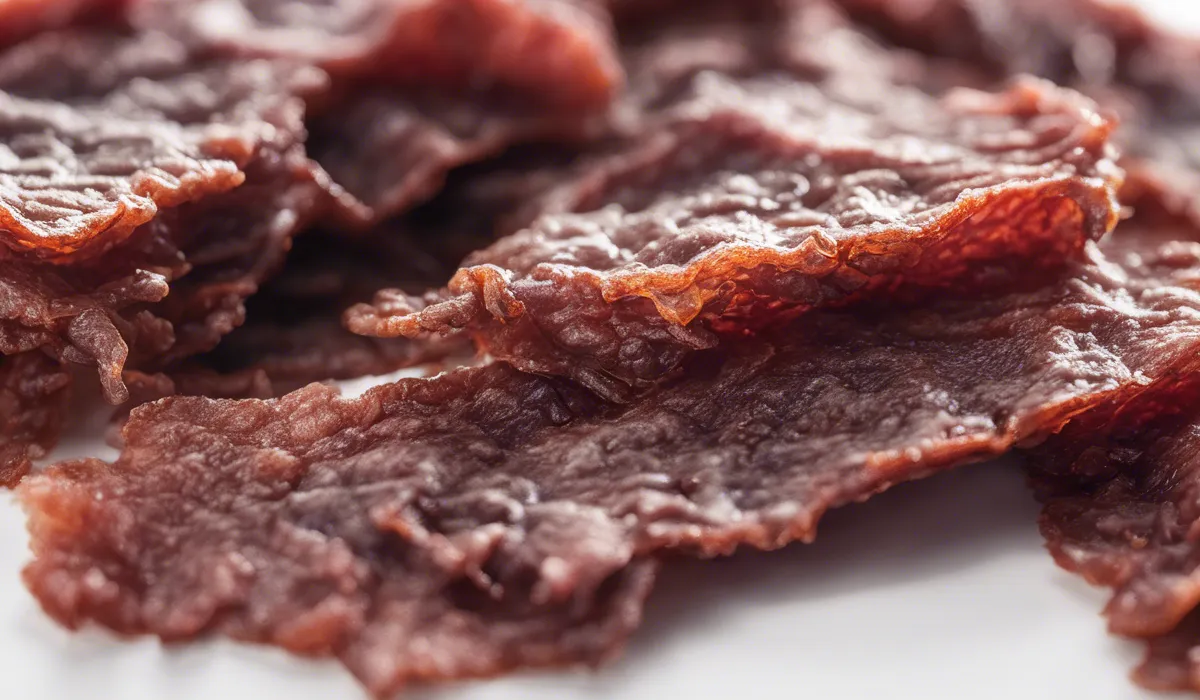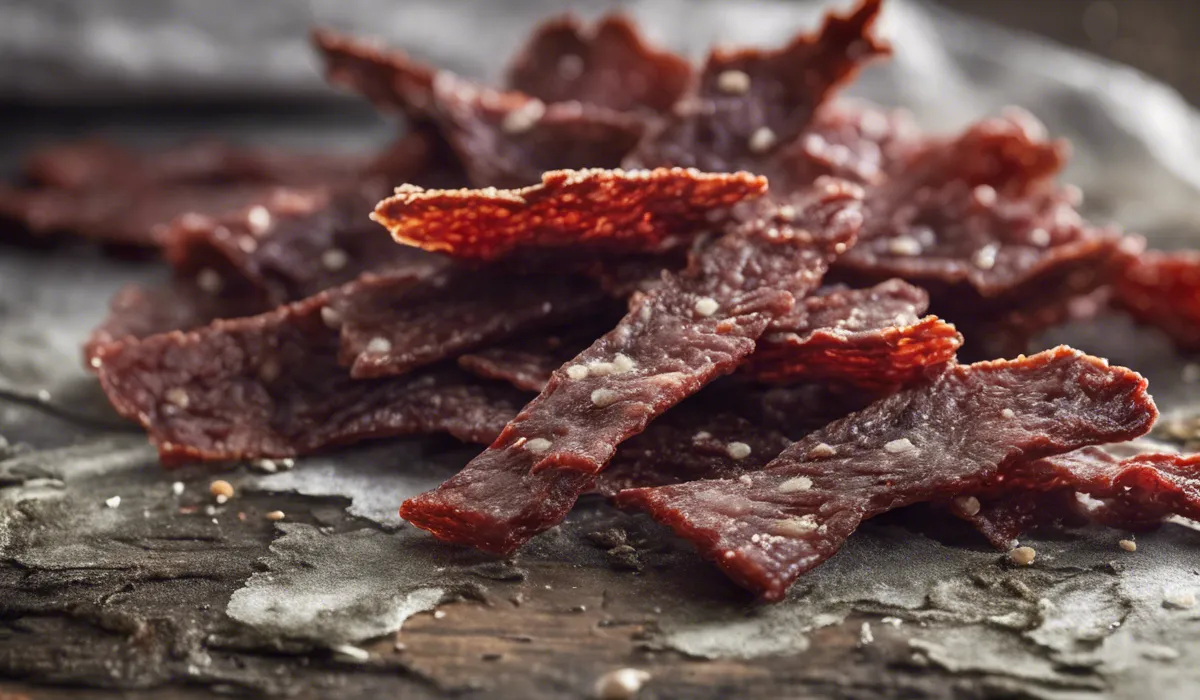Mold on jerky often appears as fuzzy white, green, or black spots. These spots can be large or small, and sometimes they’re accompanied by an off smell. It’s important to discard moldy jerky to avoid health risks.
Identification of Mold on Jerky

Common Mold Characteristics
Mold is a type of fungus that can grow on various foods, including jerky. It typically presents as fuzzy or velvety patches that can be white, green, black, or even blue. The color can tell you a lot about the type of mold.
Some molds may emit an off or musty smell, which can be a clear indication that the jerky is no longer safe to consume.
The texture of mold can range from cottony to slimy, depending on the particular type and the environment it’s growing in.
Distinguishing Mold from White Spots
Not all white spots on jerky are mold. Sometimes, they are simply salt or fat that has crystallized on the surface.
These harmless spots are often hard and can be brushed off without leaving a mark on the jerky. On the other hand, mold spots will be fuzzy and cannot be easily removed without leaving a residue.
Visual Examples of Mold on Jerky
Identifying mold on jerky is crucial. Mold can appear as irregular spots or patches. White mold may look like a thin layer of cotton, while green or black mold can appear as darker, more ominous spots.
Sometimes, the fuzzy texture is a giveaway, even if the color is not immediately noticeable. Regularly inspecting your jerky can help you spot these changes early on.
Health Risks Associated with Consuming Moldy Jerky

Potential Health Effects of Ingesting Mold
Eating moldy jerky is not advisable. Mold exposure can lead to allergic reactions in some individuals, which may include symptoms like sneezing, coughing, or itching.
For those with asthma or other respiratory conditions, consuming mold can trigger more severe reactions, such as difficulty breathing or asthma attacks.
Dangers of Mycotoxins in Moldy Food
Mycotoxins are toxic compounds produced by certain types of mold. These toxins can lead to food poisoning and have long-term health effects, including immune deficiency and even cancer.
It is crucial to understand that cooking or freezing does not eliminate mycotoxins, making the proper handling of moldy food essential.
Proper Handling and Disposal of Moldy Jerky
If you discover mold on your jerky, the best course of action is to discard it immediately. Do not sniff the moldy jerky, as this can introduce mold spores into your respiratory system.
Wrap the moldy jerky in a plastic bag and dispose of it to prevent the spread of mold spores to other foods or surfaces.
Prevention and Storage Tips to Avoid Mold Growth

Best Practices for Jerky Storage
To prevent mold growth, store jerky in a cool, dry place. The ideal temperature for storing jerky is below 70°F (21°C).
Humidity control is also vital; aim for a relative humidity below 50%. Airtight containers or vacuum-sealed bags can significantly extend the shelf life of jerky by keeping out moisture and air that mold spores need to grow.
Early Signs of Spoilage Detection
Regularly check your jerky for any signs of spoilage. This includes changes in color, texture, or smell.
If the jerky feels sticky, slimy, or has a sour or off smell, it may be starting to spoil. Catching these signs early can prevent the potential waste of the entire batch.
Safe Jerky Preparation and Preservation
Proper preparation and preservation are key to preventing mold growth. Curing jerky with the right amount of salt can inhibit bacterial growth. Drying jerky to the correct moisture content is also crucial.
Some recipes recommend using preservatives like sodium nitrite to help prevent spoilage and foodborne illnesses. Always follow safe food handling guidelines to ensure your jerky remains delicious and mold-free.
FAQs About Mold on Jerky
What are the visual signs of mold on jerky?
Mold on jerky typically manifests as fuzzy white, green, or black spots which can vary in size.
Can mold on jerky be colors other than white?
Yes, mold on jerky can also appear in green or black colors.
What does mold on jerky smell like?
Mold on jerky is often accompanied by an off, musty smell.
Is it safe to eat jerky if it has mold on it?
No, it’s important to discard jerky with mold to avoid potential health risks.
How can you tell if mold on jerky is large or small?
Mold spots on jerky can range from tiny specks to large patches, which are visible upon close inspection.
Final Thoughts
Mold on jerky is identifiable by fuzzy white, green, or black spots that vary in size. This spoilage may also emit an unpleasant odor. For health safety, it is crucial to discard any jerky that shows signs of mold.
